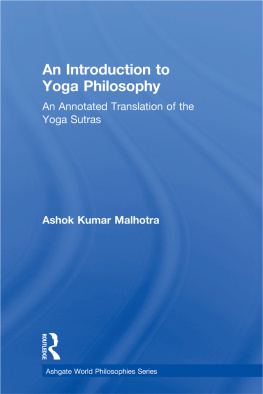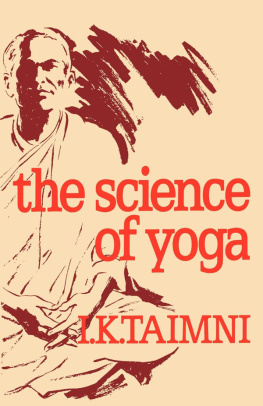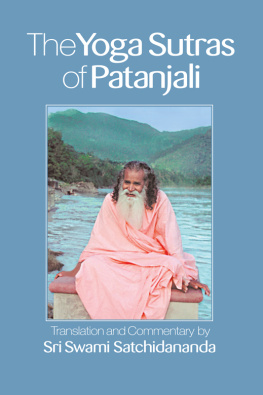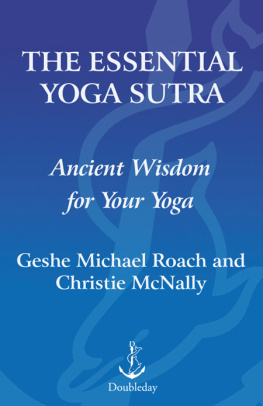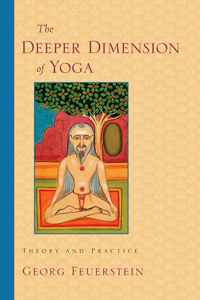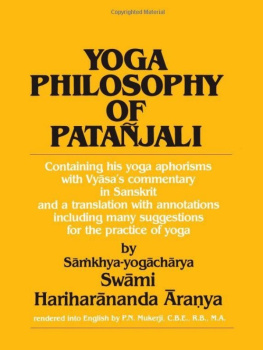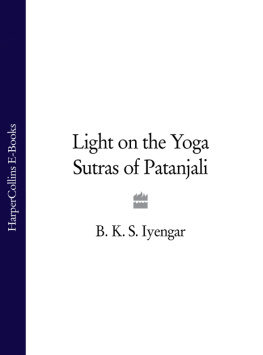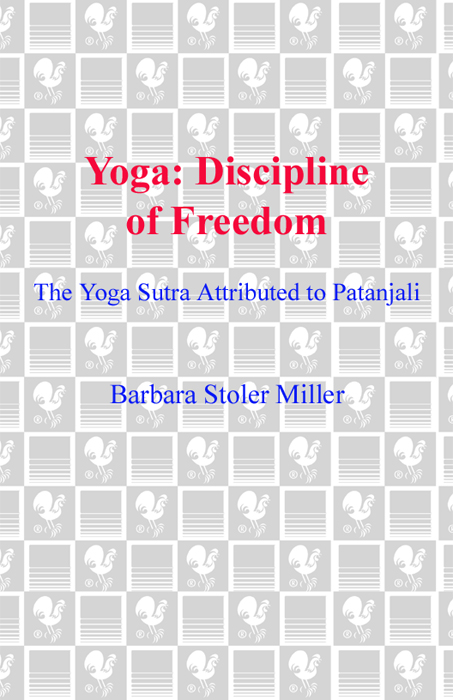Preface
At the heart of all meditative practice in Asia is what Indians call yoga, the system that yokes ones consciousness to a spiritually liberating discipline. In his Yoga Sutra the ancient Indian philosopher Patanjali presents us with the possibility of complete psychological transformation through the discipline of yoga. Each of the 195 aphorisms that constitute the Yoga Sutra is part of Patanjalis scheme for radically altering our conception of the world and the structure of thought through which we relate to it. The text is neither a sacred scripture nor a historical artifact, but a set of philosophical analyses that probe timeless dilemmas of cognition and obstacles to spiritual tranquility. Patanjali is not engaged in a search for new knowledge. Rather, he seeks a new perspective on the nature of knowinga way to clear the mind of accumulated experiences and memories that bind us to a world of pain.
Yogic practice culminates in a state of spiritual freedom, an absolute calm beyond the realm of language and everyday experience. Although the freedom of yoga cannot be grasped by ordinary knowledge, it is not realized through mystical experience but through a logical series of meditative practices and hyperconscious thought experiments. Patanjalis method for achieving insight is far from the mystical ecstasy of a poet like St. John of the Cross or the ritual ecstasy of a shaman in a trance. It is instead a contemplative intensity that unbinds the constraints of everyday experience.
Yoga was known to the West in ancient times, but it gained wide attention in Europe and America only in the nineteenth century, first through the Bhagavad Gita and later through Patanjalis Yoga Sutra, In Europe, Wilhelm Friedrich Hegel, who was introduced to yoga through the philological studies of Wilhelm von Humbolt, considered it to be the central teaching of the Bhagavad Gita and therefore to represent the core of Indian religion and philosophy. In America, Ralph Waldo Emerson and Henry David Thoreau were also deeply interested in the yoga of the Bhagavad Gita. In an 1849 letter to a friend, Thoreau wrote that he was, in his way, striving to practice the yoga faithfully and concluded that at rare intervals, even I am a yogi. While Thoreaus practical interest in yoga was consonant with his own ascetic and contemplative experiments, the rigors of yogic practice remained daunting to less-committed Westerners.
Yoga entered the public imagination in America a century ago in the person of an Indian yogi, Swami Vivekananda. The highly educated scion of a distinguished Bengali family, in his youth Vivekananda became a disciple of the Hindu mystic Ramakrishna, acknowledged throughout India as a saintly yogi. Before he died in 1886, Ramakrishna instructed his young disciple to carry his teachings into the world. In 1893 Vivekananda electrified the World Parliament of Religions at its meeting in Chicago with his speech on what he called raja-yoga, the royal yoga. It was based on Patanjalis Yoga Sutra, as interpreted by Ramakrishna. In 1894 Vivekananda initiated classes in New York on the Yoga school and on Vedanta, the dominant Hindu monistic philosophy rooted in ancient Vedic teachings. During a second visit to the United States in 1899, he founded the New York Vedanta Society and gave talks on raja-yoga, which were published by the Society in a series of Vivekanandas teachings. The volume on raja-yoga is a translation of Patanjalis work, with Vivekanandas commentary. Within the extensive body of Vivekanandas teachings on Yoga and Vedanta, his commentary on the devotional and service aspects of yoga supplement Patanjalis philosophical and meditative emphases. Many modern translations and commentaries on the Yoga Sutra reflect Vivekanandas Vedantic conceptions, among them the well-known version of Christopher Isherwood and Swami Prabhavananda, entitled How to Know God. Isherwood, a British writer, was a great admirer of Vivekananda and a supporter of the Vedanta Society in California. Prabhavananda was a monk in the Vedanta lineage of Vivekananda.
The practice of postures, known as hatha-yoga, was given minimal attention by Vivekananda as the least important component of yogic practice. Even so, this physical dimension has been extremely popular in the West and is widely practiced as a way to promote health and mental tranquility. Although few practitioners venture into the philosophical landscape of Patanjali, his analysis of human thought processes underlies the teachings of most of the gurus of yoga who have come from India.
My own interest in Patanjalis text dates back more than twenty-five years, to when I read it as one of the foundation texts of Indian philosophy. As a philosophy student I was intrigued by the startling ways in which Patanjali analyzed epistemological problems and by the method of practice he offered to penetrate them. I have tried to practice yoga ever since. More recently, my work on the Bhagavad Gita focused my attention on the concept of yoga and drew me back to Patanjali. An attempt to teach the Yoga Sutra through extant translations convinced me of the need to rescue the text from the overly technical language and scholastic debates that obscure Patanjalis brilliant analysis of how the workings of thought trap us in misconceptions about ourselves and the world. I also saw the need to find consistent equivalents in English for Patanjalis core vocabulary, rather than perpetuating the loose array of incomprehensible technical inventions on which translators have too often relied. Furthermore, disputed meanings in the commentaries are frequently muddied in translation. For example, the keyword citta, which most translators and commentators render as mind, is a major source of confusion. According to Patanjali mind is but one component of the mental structure, so I translate citta as thought and maintain this distinction, as well as many others, in keeping with Patanjalis precision. I have appended a glossary that shows every occurrence of each keyword in Patanjalis system, thus enabling the reader to grasp the meaning of the term in its various contexts. As a further aid to comprehending the Yoga Sutra, I have grouped the aphorisms into logical sections and commented on each group.
My commentary draws on traditional Indian commentaries. But rather than argue with the scholastics, I have made it my primary purpose to clarify the meaning of each aphorism from within the text. The meaning behind and within the technical references and arguments of certain sutras is highly controversial and is debated in the traditional commentaries. To penetrate most of these debates demands a control of the Sanskrit language and of the sources of Patanjalis ideas in Vedic, Buddhist, Jain, and epic literature. Fortunately, the basic insights offered in the


